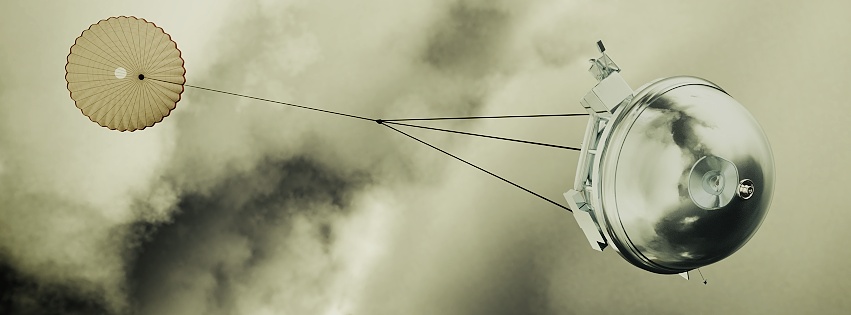Mission overview
The Hera Saturn entry probe mission is proposed as an M-class mission led by ESA with a significant collaboration with NASA. It consists of one atmospheric probe to be sent into the atmosphere of Saturn, and a Carrier-Relay spacecraft. Hera will perform in situ measurements of the chemical and isotopic compositions as well as the dynamics of Saturn’s atmosphere using a single probe, with the goal of improving our understanding of the origin, formation, and evolution of Saturn, the giant planets and their satellite systems, with extrapolation to extrasolar planets.
The primary science objectives will be addressed by an atmospheric entry probe that would descend under parachute and carry out in situ measurements beginning in the stratosphere to help characterize the location and properties of the tropopause, and continue into the troposphere to pressures of at least 10 bars. All of the science objectives, except for the abundance of oxygen, which may be only addressed indirectly via observations of species whose abundances are tied to the abundance of water, can be achieved by reaching 10 bars. As in previous highly successful collaborative efforts between ESA and NASA (e.g. Cassini-Huygens), the proposed mission has a baseline concept based on a NASA-provided carrier/data relay spacecraft that would deliver the ESA-provided atmospheric probe to the desired atmospheric entry point at Saturn. ESA’s proposed contribution should fit well into the M5 Cosmic Vision ESA call cost envelope. Other options, involving different ESA-NASA share, depending on the technology assessment and availability of funding, could be considered.
A nominal mission configuration would consist of a probe that detaches from the carrier one to several months prior to probe entry. Subsequent to probe release, the carrier trajectory would be deflected to optimize the over-flight phasing of the probe descent location for both probe data relay as well as performing carrier approach and flyby science, and would allow multiple retransmissions of the probe data for redundancy. The Saturn atmospheric entry probe would in many respects resemble the Jupiter Galileo probe. It is anticipated that the probe architecture for this mission would be battery-powered and accommodate a data relay to the carrier for data collection, storage on board the carrier/data relay, for later retransmission to Earth. Trades would need to be done to assess the complexity (and cost) of probe and telecom link design as a function of operational depth in the atmosphere.
